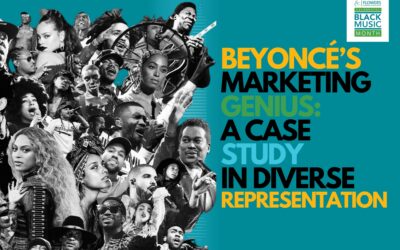Key moments in time, such as Global Diversity Awareness Month, Hispanic Heritage Month, Pride Month, and Black History Month, hold immense significance and provide a platform for celebrating and acknowledging the rich tapestry of the human experience while fostering understanding and unity across communities. They further serve as a reminder of the historical struggles and triumphs of marginalized groups and highlight the ongoing challenges they face.
For communications professionals, recognizing and embracing the importance of these moments is crucial, as it reflects a commitment to diversity, inclusivity, equity and social responsibility. By connecting with and honoring diverse communities throughout the year, companies not only demonstrate their dedication to marginalized communities, but also tap into diverse perspectives and narratives.
Marketers must also ask themselves: Are we being genuine in our approach to supporting this community or are we playing into just another insensitive marketing tactic?
When we look at a moment like Pride Month, which bears immense personal significance as a member of the LGBTQ+ community, there are many aspects to consider when approaching it from a marketing lens. Brands and corporations adopt LGBTQ+ Pride themes in their logos – only to revert to their original branding once the month of June ends. Another example is how companies often partner with LGBTQ+ influencers to speak on behalf of their brand or create merch that “caters” to members and allies of the LGBTQ+ community. These “check-the-box” practices, however, often face criticism.
There are also audiences and reactive responses you should consider to stay true and authentic with your LGBTQ+ audience. Take Bud Light and Target as examples. Bud Light, in particular, suffered significant financial losses, amounting to over $9 billion, due to boycotts after the brand partnered with a transgender influencer promoting a Bud Light contest. The backlash resulted in vandalizations of store displays and destroyed merchandise in an effort from conservatives to spread awareness on social media. Similarly, those that boycotted Target were against the retailer’s inclusive clothing products, costing the retailer more than a $10 billion dollar loss. The most concerning aspect of these situations was not the predictable response from the conservative consumer base, but rather that of the brands that backed out of supporting a marginalized community. As marketers, it forces us to reflect on how we can ensure corporations truly stand by the communities they aim to represent and connect with.
To provide guidance on how to genuinely and authentically support the LGBTQ+ community, we’re taking it back to the building blocks. Leveraging the traditional Pride flag, which has been a guiding star in my personal and professional life, we developed a Pride Guide that aligns to the colors of the flag and their respective meaning. Remember: allyship stems beyond one month. Use these tips as a tool to engage and celebrate the LGBTQ+ community year-round.
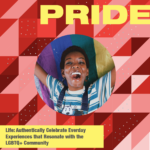

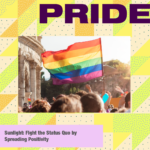

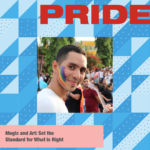
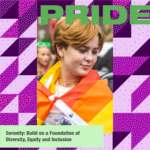
(Red) Life: Authentically Celebrate Everday Experiences that Resonate with the LGBTQ+ Community
Marketing should go beyond trends. An excellent example is a Campell’s Soup commercial promoting its partnership with Star Wars that showcases a heartwarming scene between two gay parents lovingly feeding their child, just like any other parents would. This promotional campaign was not a gimmick created for Pride Month. Rather, it was about celebrating a genuine moment to show relatability to the audience. Remember that effective marketing is not limited to a specific month or moment in time; it should resonate with people’s everyday experiences and celebrate their authentic self.
(Orange) Healing: Address Challenges and Create a Safe Space to Heal
Many LGBTQ+ individuals have struggled with acceptance and coming out due to cultural norms. Doritos tackled this issue head-on by releasing an advertisement that aimed to connect with the Latinx LGBTQ+ community. The ad portrayed a family accepting their deceased uncle’s coming out, emphasizing that it’s never too late for acceptance. It is essential to address the unique challenges faced by different communities while still promoting inclusivity.
(Yellow) Sunlight: Fight the Status Quo by Spreading Positivity
Marketers need to explore unexpected territories and demographics. Ford trucks, traditionally associated with rugged masculinity, surprised audiences by incorporating LGBTQ+ friendly messaging into one of its commercials, redefining what “tough” means. Ford maintained its brand identity while tastefully paying homage to the LGBTQ+ community. This example shows that inclusivity doesn’t mean compromising your brand; it signifies expanding your audience.
(Green) Nature: Foster a Welcoming Environment for All
Our shared environment unites us all. The North Face and GetAway cabins exemplify how brands can embrace diversity and inclusivity year-round. The North Face introduced “Pattiegonia,” a playful invitation to come out, while GetAway cabins consistently promote a welcoming atmosphere. Supporting the LGBTQ community shouldn’t be limited to Pride month; it should be a continuous effort.
(Blue) Magic and Art: Set the Standard for What is Right
Companies like Target and Bud Light faced backlash for their attempts at inclusivity. However, this shouldn’t deter marketers from pushing boundaries and creating engaging campaigns. Marketers must find better ways to approach and stand by their values, but also guide clients to do what is right. The key to a successful LGBTQ+ marketing campaign or program is to create magical experiences that foster connection and understanding, even in the face of resistance.
(Indigo) Serenity: Build on a Foundation of Diversity, Equity and Inclusion
Diversity, Equity and Inclusion should be at the core of any LGBTQ+ driven campaign or program. Educate your audience by incorporating real experiences, engage in conversations with members of the LGBTQ+ community and learn from their journeys. This deeper understanding will add depth and authenticity. As marketers, we must go beyond token gestures and truly make a statement that sparks dialogue and understanding.
When planning your next campaign designed to deepen brand connections with diverse communities, it is essential to look beyond isolated key moments. Instead, recognize that the collective concerns and focus of today’s consumer groups, like the LGBTQ+ community, extend throughout the entire year. Remember: you don’t have to walk a mile in someone else’s shoes, but acknowledging their experiences and needs is the first step towards equity and inclusivity to foster a genuine sense of belonging for all.
Helen Rabadán is an Art Director at Flowers Communications Group.


